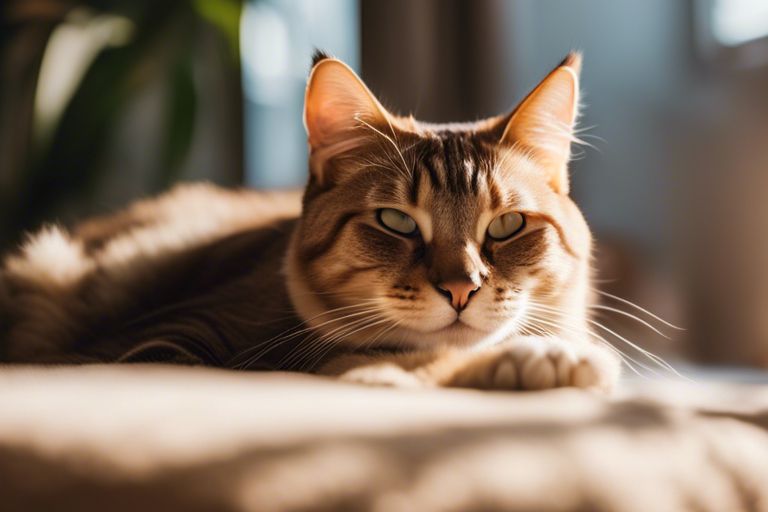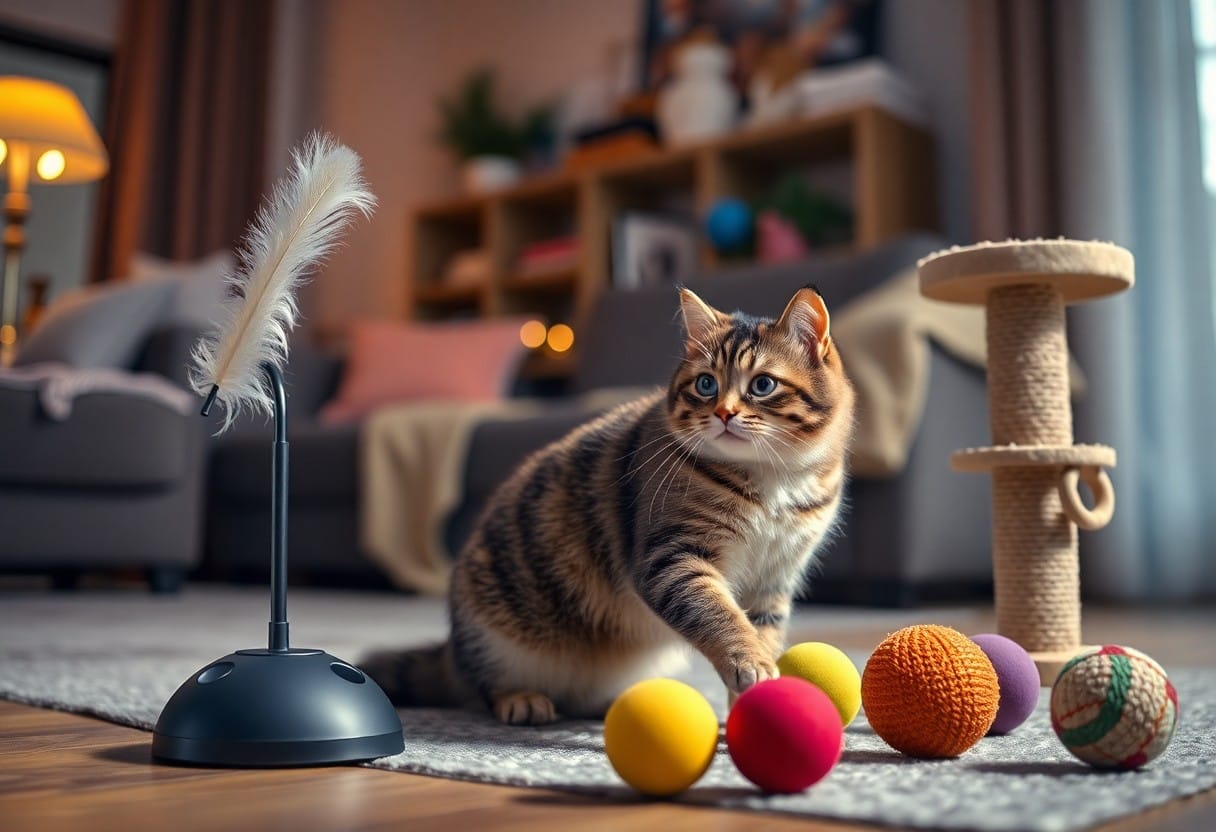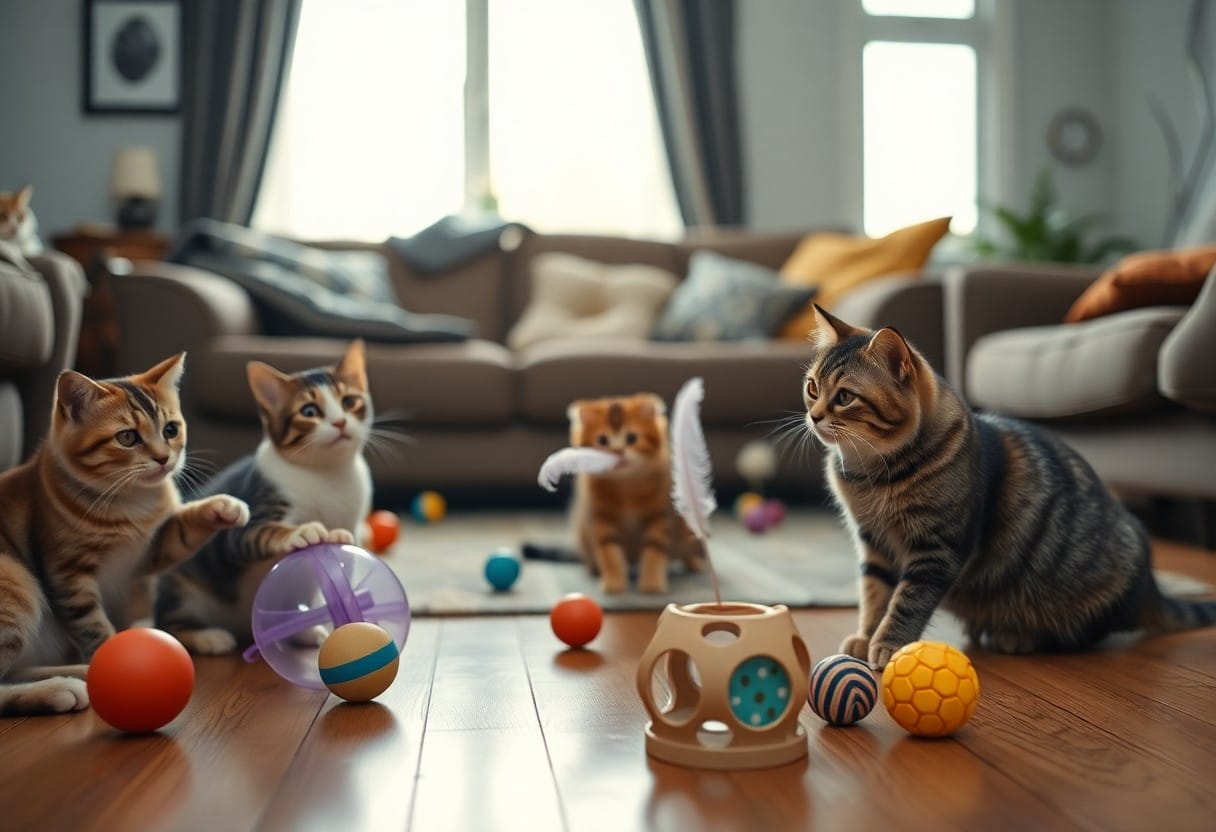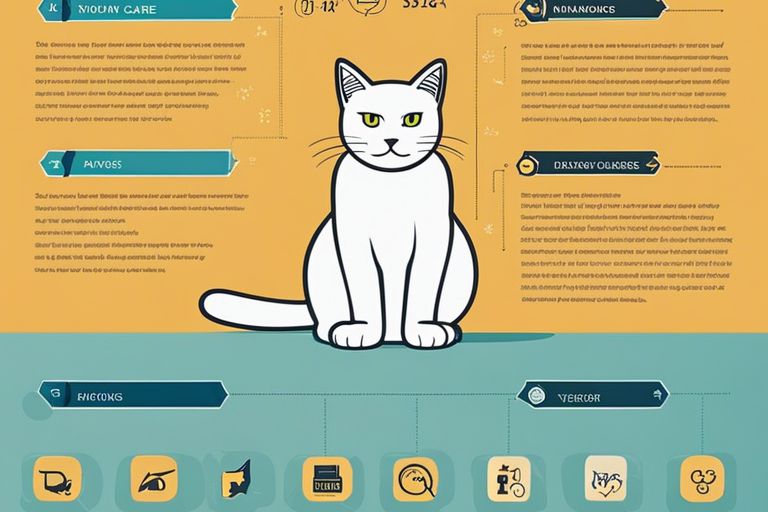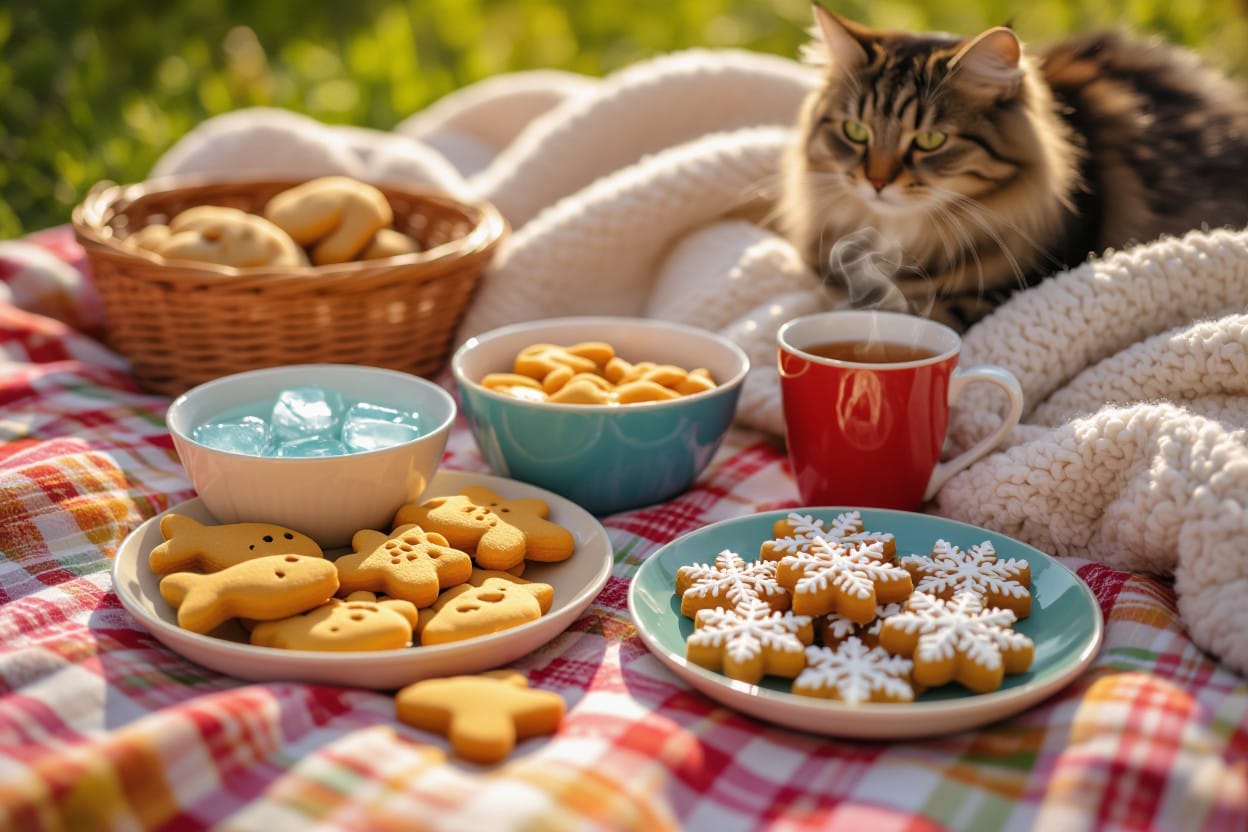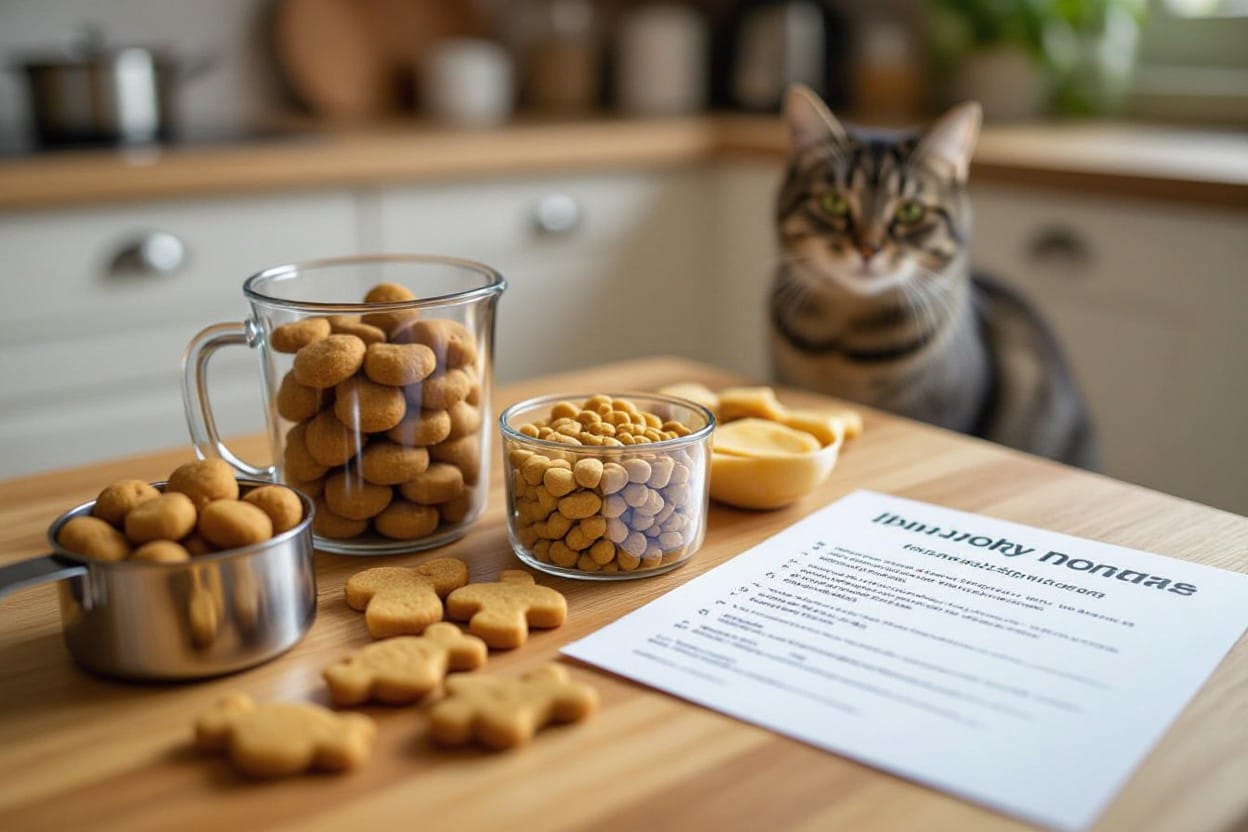Understanding your cat’s behavior is important in ensuring their health and happiness. Recognizing the signs that indicate your cat is happy can help strengthen your bond and provide a loving environment for your feline friend. Cats communicate their contentment through various cues that may be subtle but significant indicators of their well-being.
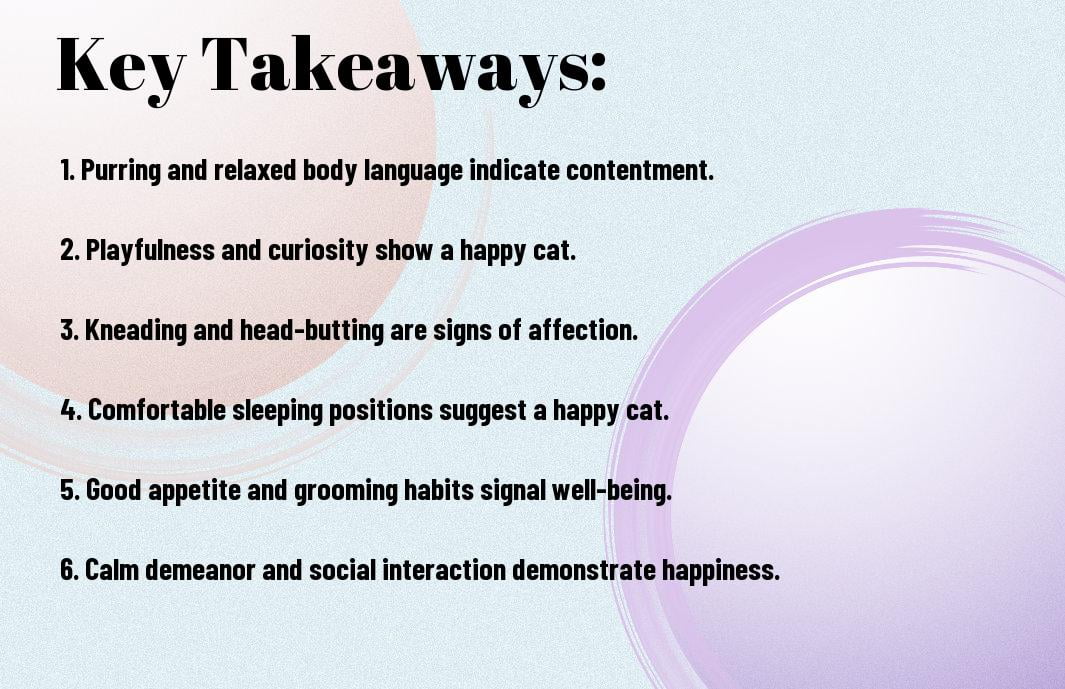
The Fundamentals of Feline Communication
Even though cats cannot talk in words, they have a sophisticated system of communication that they use to express their feelings and needs. Understanding your cat’s communication cues is vital in building a strong bond with your furry friend.
Verbal Communication: Meows, Purrs, and Hisses
Meows are the most common form of verbal communication that cats use to interact with their human companions. Each cat has a unique meow that they use to communicate different things, such as hunger, affection, or displeasure. Purring is often associated with contentment and relaxation, although cats may also purr when they are injured or stressed. Hissing, on the other hand, is a clear sign of fear or aggression.
Non-Verbal Communication: Body Language and Tail Positions
NonVerbal communication, including body language and tail positions, plays a crucial role in understanding your cat’s mood and intentions. A cat’s body language, such as flattened ears, dilated pupils, or arched back, can indicate feelings of fear, aggression, or affection. Tail positions also provide valuable insights into your cat’s emotional state, with a high, straight tail signaling confidence and a puffed-up tail indicating fear or aggression.
Observing your cat’s body language and tail positions can help you better understand their needs and feelings, allowing you to provide them with the care and attention they require. By paying attention to these non-verbal cues, you can strengthen your bond with your feline companion and ensure their well-being.
The Happy Cat Checklist
Physical Signs of a Content Feline
For cat owners, observing physical signs of a happy cat is important for understanding their pet’s well-being. A cat that is content and happy will have a relaxed body posture, with ears facing forward and a relaxed tail. Their eyes should be bright and clear, with a soft gaze. A healthy cat will have a sleek coat, free of mats or tangles, and they will groom themselves regularly.
Behavioral Indicators of Feline Happiness
Any cat owner can attest that a content cat will exhibit specific behaviors that indicate their happiness. Purring is a clear sign of a happy cat, as it signifies contentment and relaxation. A happy cat will also engage in play, either alone with toys or with their human companions. They will show affection by rubbing against people or objects, as well as kneading with their paws.
Happy cats will also exhibit social behaviors, such as following their owners around the house or seeking out attention. They may also enjoy basking in the sun, lounging in comfortable spots, or even bringing small “gifts” like toys to their favorite humans.
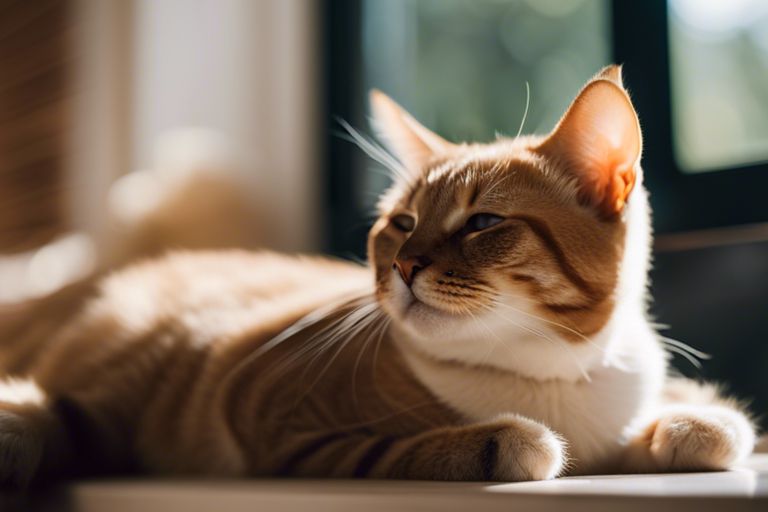
Interaction and Playtime
Types of Play and What They Indicate
To foster a strong bond with your feline companion, it is necessary to understand the various types of play behaviors exhibited by cats. Engaging in playtime with your cat not only provides physical exercise but also strengthens the human-cat relationship. Different types of play can reveal important cues about your cat’s mood and overall well-being.
- Chasing and pouncing: Indicates hunting instincts are being fulfilled.
- Interactive play with toys: Shows engagement and mental stimulation.
- Play fighting: Demonstrates trust and affection within the relationship.
- Solitary play: Allows for independence and self-entertainment.
- Hide-and-seek games: Reflects a sense of security and comfort in the environment.
Knowing how your cat prefers to play can offer insight into their personality and help strengthen the bond between you and your furry friend.
Human-Cat Interaction: Bonding with Your Furry Friend
To deepen the connection with your cat, engaging in interactive play is crucial. This not only satisfies your cat’s natural instincts but also establishes trust and mutual understanding. Through play sessions, you can communicate with your cat, learn their preferences, and create a stimulating environment that promotes a healthy and happy relationship.
It is necessary to set aside dedicated playtime each day to nurture your bond with your cat. Note, play is not just a physical activity but a way to communicate, build trust, and enhance the well-being of your feline companion.
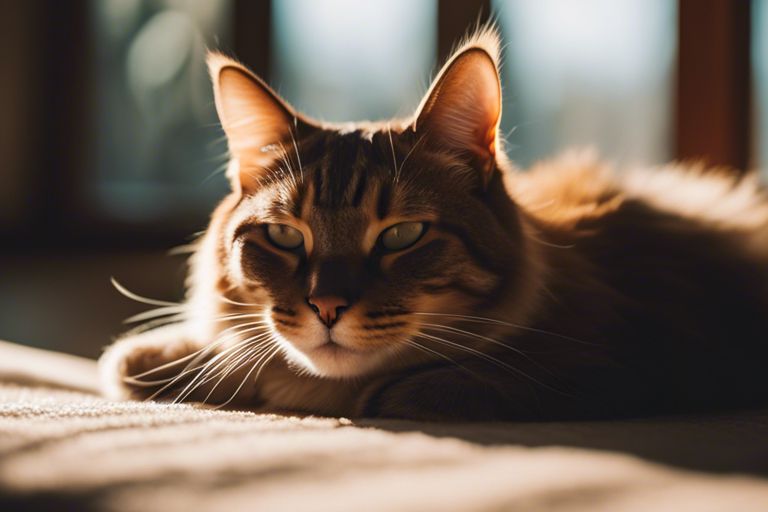
Comfort and Environment
Now, let’s talk about the comfort and environment of your cat. Providing a conducive living space for your feline friend is crucial for their overall well-being and happiness. Cats are creatures of habit and are highly sensitive to their surroundings.
Ideal Living Conditions for Your Cat’s Well-being
Comfort is key when it comes to your cat’s living conditions. Ensure that your cat has a cozy and safe place to rest, high perches to observe their environment, scratching posts to satisfy their natural instincts, and access to clean litter boxes. Cats also appreciate environmental enrichment such as interactive toys, hiding spots, and opportunities for play and mental stimulation.
The Impact of a Stable Routine on Your Cat’s Happiness
On the other hand, maintaining a stable routine has a significant impact on your cat’s happiness. Cats thrive on predictability and routine. Feeding, playtime, grooming, and other daily activities should be consistent to provide a sense of security and stability for your furry companion.
This predictability helps reduce stress and anxiety in cats, leading to a happier and more content pet. Be mindful of any changes in your cat’s routine and try to minimize disruptions to promote a harmonious environment for your beloved feline friend.
Health and Nutrition
The Role of Diet in Your Cat’s Behavior
All cat owners want their furry friends to be happy and healthy. One crucial aspect of your cat’s well-being is nutrition. A well-balanced diet not only supports your cat’s physical health but also plays a significant role in their behavior. Cats are obligate carnivores, meaning their diet should primarily consist of meat. Ensuring that your cat is getting the right balance of protein, fats, vitamins, and minerals will help maintain their overall health and positively impact their behavior.
Recognizing the Signs of a Physically Healthy Cat
Recognizing the signs of a healthy cat goes beyond just looking at their physical appearance. Cats are masters at hiding illness, so being observant of their behavior is key. Signs of a physically healthy cat include clear and bright eyes, a shiny coat, a healthy weight, and good energy levels. Any changes in eating habits, litter box use, or activity levels can be indicators of an underlying health issue that needs to be addressed promptly.
Your cat’s health is of utmost importance, and being proactive in monitoring their well-being can lead to early detection of any potential problems. Regular veterinary check-ups, proper nutrition, and a loving environment are imperative for maintaining your cat’s physical health and overall happiness.
Dealing with Behavioral Challenges
Understanding the Root of Common Behavioral Issues
Despite our best efforts, sometimes our feline friends exhibit behaviors that may be puzzling or challenging to us. Understanding the reasons behind these common behavioral issues is crucial in addressing them effectively. Cats may act out due to stress, fear, boredom, or a lack of socialization. It is necessary to observe your cat’s environment, routines, and interactions to pinpoint the possible triggers of their unwanted behaviors.
Strategies for Addressing and Preventing Unwanted Behaviors
On the road to resolving behavioral challenges, implementing proactive strategies can go a long way in preventing unwanted behaviors from escalating. By providing ample mental and physical stimulation through interactive toys, scratching posts, and play sessions, you can help keep your cat engaged and content. Creating a calm and safe space for your cat, free from loud noises or sudden changes, can also contribute to a more relaxed and happy feline companion.
With consistency and patience, you can gradually modify your cat’s behavior by utilizing positive reinforcement techniques. Rewarding desirable behaviors with treats or praise while redirecting or ignoring unwanted behaviors can help shape your cat’s actions over time. Seeking guidance from a professional behaviorist or veterinarian may also be beneficial in more complex cases.
Unwanted behaviors in cats are often their way of expressing underlying needs or concerns. It is necessary to approach these challenges with a compassionate and understanding mindset, striving to address the root cause rather than simply attempting to suppress the behavior itself. By taking a holistic approach to your cat’s well-being and environment, you can effectively tackle behavioral issues and foster a harmonious relationship with your feline companion.
Conclusion
To wrap up, understanding your cat’s behavior is important for providing them with a happy and healthy life. By recognizing the signs of a happy cat, such as purring, relaxed body language, and playful behavior, you can ensure that your feline companion is content and well-cared for. It is important to pay attention to your cat’s behavior cues and adjust your interactions accordingly to foster a strong bond and a positive relationship with your pet.
Note, every cat is unique, and what makes one cat happy may not necessarily apply to another. By being attentive, patient, and responsive to your cat’s needs and preferences, you can create a harmonious environment where your feline friend can thrive and live a fulfilling life.
FAQ
Q: How can I tell if my cat is happy?
A: There are several signs that indicate a happy cat, such as relaxed body language, purring, playful behavior, and kneading. A happy cat will also have a healthy appetite and groom regularly.
Q: What does it mean when my cat kneads me?
A: Kneading is a common behavior in cats that is typically a sign of contentment. It is a behavior that stems from kittenhood when cats knead their mother’s belly to stimulate milk flow. When your cat kneads you, it means they feel safe and comfortable in your presence.
Q: Why does my cat groom excessively when they are happy?
A: Cats are naturally clean animals, and grooming is a way for them to relax and release stress. When a cat is happy, they may groom more as a way of self-soothing and maintaining their cleanliness.
Q: What are some play behaviors that indicate my cat is happy?
A: Playful behaviors such as chasing toys, pouncing on objects, and engaging in interactive play with their human are all signs of a happy cat. Play is an important outlet for cats to release energy and stimulate their minds.
Q: How can I create a happy environment for my cat?
A: To ensure your cat’s happiness, provide them with a balanced diet, plenty of toys for mental and physical stimulation, a comfortable resting area, regular grooming, and a safe and secure environment. Additionally, spend quality time interacting and playing with your cat to strengthen your bond and keep them happy.
